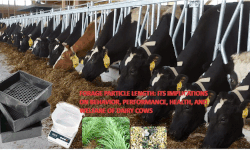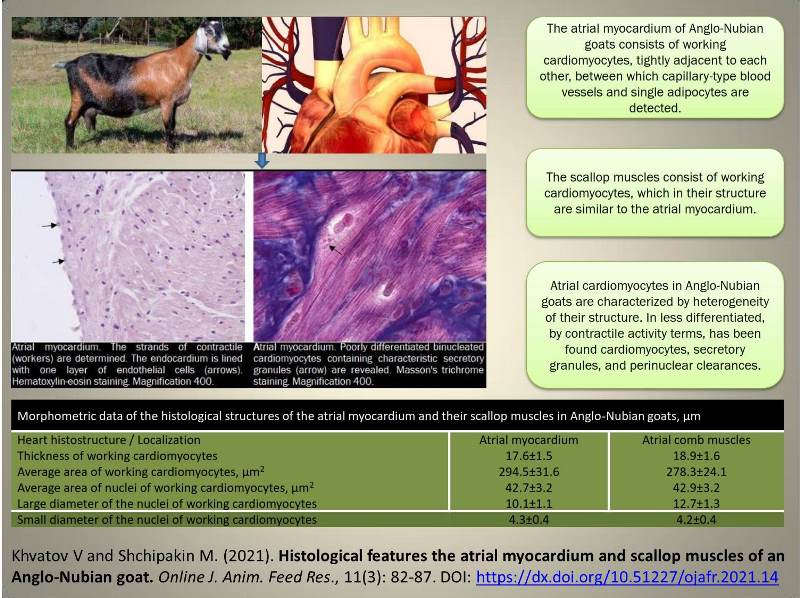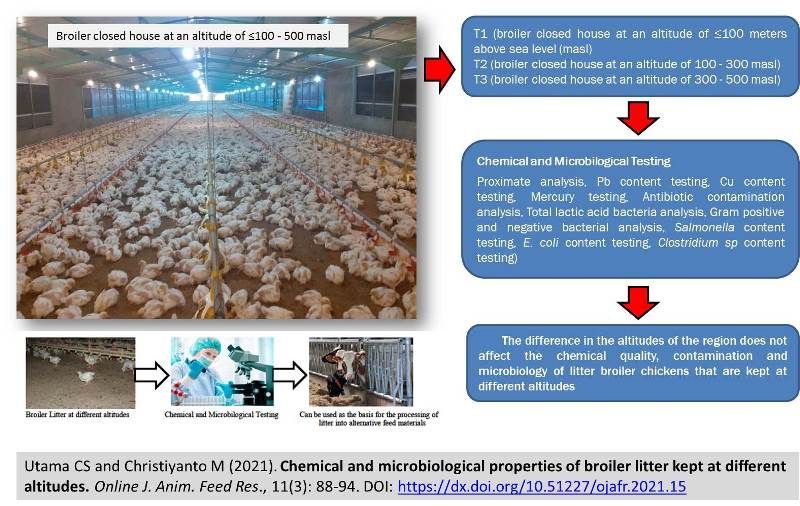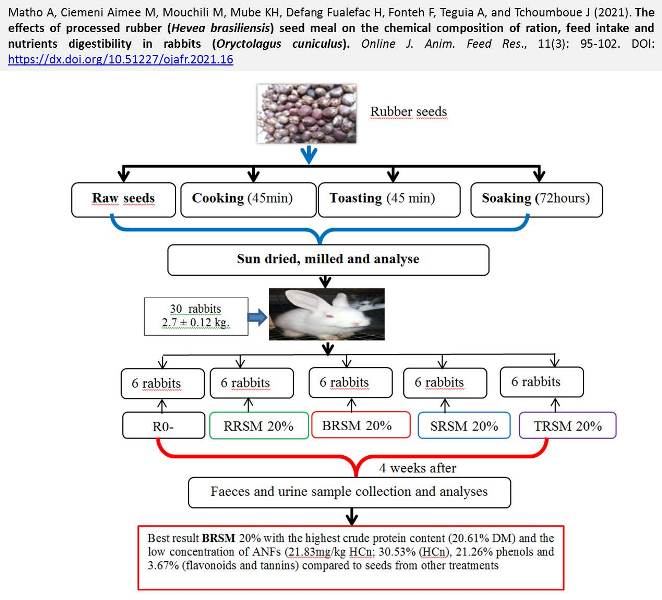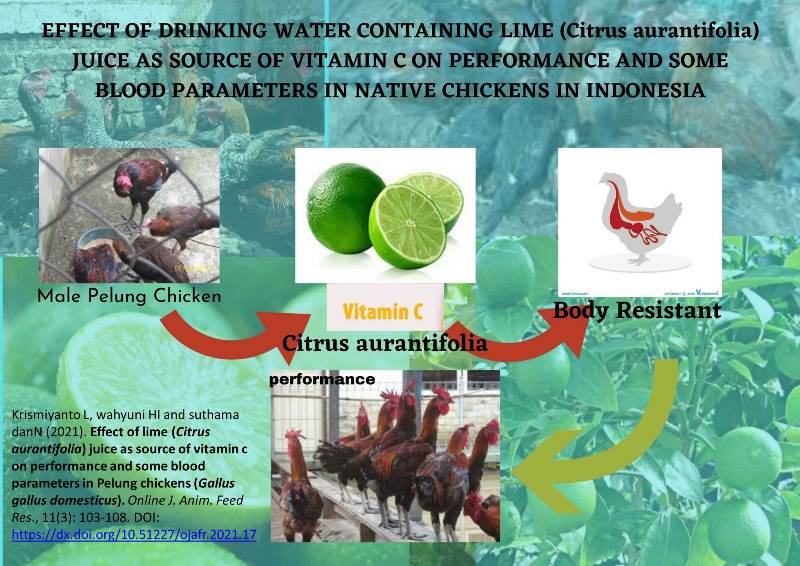Previous issue | Next issue | Archive
![]() Volume 11 (3); May 29, 2021 [Booklet] [EndNote XML for Agris]
Volume 11 (3); May 29, 2021 [Booklet] [EndNote XML for Agris]
Forage particle size: it’s implications on behavior, performance, health and welfare of dairy cows
Hossain E.
Online J. Anim. Feed Res., 11(3): 72-81, 2021; pii: S222877012100013-11
DOI: https://dx.doi.org/10.51227/ojafr.2021.13
Abstract
Forage particle size has long been recognized as the key intricate factor determining ration contents of physically effective neutral detergent fibre, which in recent years has become the most important consideration in advanced dairy feed formulation for the rumen health, milk yield and welfare of the dairy cows. Fine chopping reduces particle size, resulting in reduced forage dry matter intake, lower retention period of digesta, decreased digestibility of fiber, inconsistent quality of ruminal mat, decreased milk yield, depression of milk fat, and health issues secondary to sub-acute ruminal acidosis. Similarly, excessive coarse forage particles may be lead to reduced total nutrient intake, poor digestibility of organic matter, reduced milk yield and quality, and compromised overall performance. The rumen is a constant fermentation vessel, containing vast amounts of hydrogen ions that can only be stabilized by a proper salivary buffer balance obtained through intake of sufficient effective neutral detergent fibre and its optimal duration. The overall impacts of particle size, however, depend on forage type, forage to concentrate ratio and, fermentability characteristics of the organic matter in the formulated ration. In general, 8-19 mm particle size irrespective of forage type measured on Penn State Particle Separator may be considered optimum for practical dairy feed formulation.
Keywords: Dairy cattle, Forage particle size, Health, Milk yield, Performance.
[Full text-PDF] [Scopus ID: 85107677188] [ePrint] [HTML] [ePub] [XML] [Export citation to RIS & EndNote] [How to Cite]
Histological features the atrial myocardium and scallop muscles of an Anglo-Nubian goat (Capra aegagrus hircus)
Khvatov V and Shchipakin M.
Online J. Anim. Feed Res., 11(3): 82-87, 2021; pii: S222877012100014-11
DOI: https://dx.doi.org/10.51227/ojafr.2021.14
Abstract
This study presents results about features of the structure of the atrial myocardium and scallop muscles of the Anglo-Nubian goat (Capra aegagrus hircus), and their morphometric parameters have been determined. Sixteen corpses of Anglo-Nubian goats at the age of twelve months were studied in the Department of Animal Anatomy of the St. Petersburg State University of Veterinary Medicine. The study was carried out by making histological preparations. The atrial myocardium of Anglo-Nubian goats consists of working cardiomyocytes, tightly adjacent to each other, between which capillary blood vessels and single adipocytes are revealed. It has been determined that atrial cardiomyocytes in Anglo-Nubian goats are characterized by heterogeneity of their structure, and secretory granules and perinuclear clearances are found in cardiomyocytes less differentiated in terms of contractile activity. In the present study, the histological structure of the atrial scallop muscles of the Anglo-Nubian goat was identified. Also, the atrial myocardium's working cardiomyocytes' morphometric parameters and its scallop muscles had discovered. The thickness of the endocardium in these sections was measured by determining the diameters of its nuclei. The obtained data indicate that the histological structure of the atrial myocardium and its scallop muscles in Anglo-Nubian goats has possibly similar features in compared with small ruminants from commercial breeds (sheep and goat). These results expand the field of knowledge on pedigree anatomy and histology of the heart in farm animals, particularly in small ruminants.
Keywords: Atrium, Goat, Histology, Myocardium, Scallop muscles.
[Full text-PDF] [Scopus ID: 85107686544] [ePrint] [HTML] [ePub] [XML] [Export citation to RIS & EndNote] [How to Cite]
Chemical and microbiological properties of broiler litter kept at different altitudes
Utama CS and Christiyanto M.
Online J. Anim. Feed Res., 11(3): 88-94, 2021; pii: S222877012100015-11
DOI: https://dx.doi.org/10.51227/ojafr.2021.15
Abstract
The research objective was to assess the chemical and microbiological properties of broiler litter raised in broiler closed house at different altitudes. The design used was a completely randomized design with 3 treatments and 5 replications. The treatments consisted of T1 (broiler closed house at an altitude of ≤100 meters above sea level (masl), T2 (broiler closed house at an altitude of 100 - 300 masl) and T3 (broiler closed house at an altitude of 300 - 500 masl). The results showed that the difference in the altitude where broilers were raised had no significant effect on moisture, ash, extract ether (EE), crude fibre (CF), nitrogen free extract (NFE), total digestible nutrients (TDN), cuprum (Cu), lead (Pb), mercury (Ag), lactic acid bacteria (LAB), Salmonella, E. coli, Clostridium sp., antibiotic contamination (below the threshold) and predominance of gram-positive bacteria. The results of water content 22.71-24.65%, crude protein 13.13-13.47%, Pb 35.15-47.80 ppm, Cu 102.46-136.96 ppm, LAB 3.48 - 7.00 × 106 cfu/g. In conclusion, the differences in the altitude did not affect the chemical and microbiological properties of broiler litter.
Keywords: Altitude, Bacteria, Chemical properties, Litter, Poultry.
[Full text-PDF] [Scopus ID: 85107692005] [ePrint] [HTML] [ePub] [XML] [Export citation to RIS & EndNote] [How to Cite]
The effects of processed rubber (Hevea brasiliensis) seed meal on the chemical composition of ration, feed intake and nutrients digestibility in rabbits (Oryctolagus cuniculus)
Matho A, Ciemeni Aimee M, Mouchili M, Mube KH, Defang Fualefac H, Fonteh F, Teguia A, and Tchoumboue J.
Online J. Anim. Feed Res., 11(3): 95-102, 2021; pii: S222877012100016-11
DOI: https://dx.doi.org/10.51227/ojafr.2021.16
Abstract
This study aimed at evaluating the influence of processed rubber (Hevea brasiliensis) seed meal (RSM) on the chemical composition of feed, feed intake and nutrients digestibility in rabbits. For the purpose, 30 female (local breed) rabbits with an average weight of 2.7 ± 0.12 kg were randomly allotted to five dietary treatments (6 rabbits in 1 treatment). The feeding trial lasted for four weeks and the various rations were: negative control ration, not containing rubber seeds (R0-) and 4 different rations each containing 20% of the rubber seed meal (raw, toasted, soaked, and boiled respectively for R0+, R1, R2, and R3 rations). The rubber seed meal, faeces and feed sample were sun dried to constant weight, urine was also collected and a sample was used for chemical analysis. The results showed that the boiled seeds RSM exhibited the highest crude protein content (20.61% DM) and the low concentration of anti-nutritional factors (ANFs) (21.83 mg/kg HCn; 30.53%; 21.26% and 3.67% respectively for hydrogen cyanide (HCn), phenols, flavonoids and tannins) compared to seeds from other treatments. Animals receiving the ration with boiled rubber seed meal (BRSM) at 100°C for 45 minutes (R3) showed better feed intake and best rate of digestive utilization coefficients of dry matter, organic matter, crude protein and crude fibres 32.24%; 38.55%; 61.03% and 80.58% respectively. The ration containing the boiled rubber seeds for 45 min resulted in better nutrient intake and the best digestive utilization coefficients in rabbits.
Keywords: Digestibility, Hevea brasiliensis, Nutritional value, Rabbit, Rubber seed.
[Full text-PDF] [Scopus ID: 85107654288] [ePrint] [HTML] [ePub] [XML] [Export citation to RIS & EndNote] [How to Cite]
Effect of lime (Citrus aurantifolia) juice as source of vitamin c on performance and some blood parameters in Pelung chickens (Gallus gallus domesticus)
Krismiyanto L, Wahyuni HI and Suthama dN.
Online J. Anim. Feed Res., 11(3): 103-108, 2021; pii: S222877012100017-11
DOI: https://dx.doi.org/10.51227/ojafr.2021.17
Abstract
Pelung chicken (Gallus gallus domesticus) is a typical Indonesian local breed originating from West Java. Pelung chicken breeding, especially male bird, was initially used as a hobby livestock because they have tunable voice. This study aimed to evaluate the effect of feeding lime (Citrus aurantifolia) juice as a source of vitamin C on blood parameter and performance of male pelung chickens. The experimental birds were 64 male pelung chicken aged 12 weeks, divided into 4 weight groups namely group I: 740 – 910 g, group II: 910 – 1,080 g, group III: 1,080 – 1,250 g, and group IV: 1,250 – 1,420. The treatments applied were T0: formulated diet; FD, T1: FD+ lime juice 1%, T2: FD + lime juice 2%, and T3: FD + lime juice 3%. The present experiment was assigned in body weight-based randomized block design. Measured parameters were heterophile, lymphocyte, heterophile-lymphocyte ratio (H/L), total plasma protein, the relative weight of lymphoid organs (spleen and bursa of fabricius) and performance (feed intake, daily body weight gain and feed conversion ratio) of birds. The results showed that the feeding diet added with 1-3% lime juice significant on heterophile, H/L ratio, the relative weight of spleen, total plasma protein, daily body weight gain and feed conversion ratio, but not significant on lymphocyte, the relative weight of bursa of fabricius and feed intake. Male pelung chicken fed diet added with 3% lime juice (T3) indicates better blood parameter stability (H/L ratio and lymphoid organs), total plasma protein and performance.
Keywords: Blood parameter, Lime, Pelung chicken, Performance, Vitamin C.
[Full text-PDF] [Scopus ID: 85107787562] [ePrint] [HTML] [ePub] [XML] [Export citation to RIS & EndNote] [How to Cite]
Previous issue | Next issue | Archive![]()
| < Prev | Next > |
|---|

